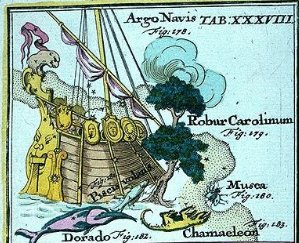Tah., pare, a fort, place of refuge; pare-pare, to defend, guard, entreat the deities for favours; pare-u, a garment worn around the loins.
Sam., pale, a head-dress, frontlet; faa-pale, to bear patiently, be exempt from work.
Marqu., pae, head-dress, a veil.
Cognate to this is probably the Haw., pole, pole-pole, to ward off, fend off, separate. Fiji., bore, to scrape or wash the dirt off; to brighten up. Sam., pole-pole-wale, to palpitate, as the heart, be distressed in mind.
Greek, φαρος, a large cloth, cloak, or mantle, shroud; παλλω, to sway, swing, poise, toss; παλμη, a shield; παλμος, a quivering motion, vibration, palpitation; πελτη, a small shield; πελεμιζω, shake, make to quiver, drive away.
Lat., pello, to strike, beat, put in motion, to thrust away, push back, expel; parma, a shield; palpo, to tap, to stroke gently; palpito; palla, pallium, a covering, outer garment.
Armor., pallen, a covering, cloak.
Pers., par, a turban. Beluch., phall, id.
Liddell and Scott give no root, but refer φαρος to palla, pallium, as of probably same root. That reference, however, brings to light the connection of φαρος and palla with παλλω and pello, and their derivatives, as well as with Polynesian pale and pole. From these premises I am led to the conclusion that the Greek φαρετρα, a quiver, also belongs to this family, and not to φερω, to bear, as Liddell and Scott intimate. And though these gentlemen refer βλεφαρον, the eyelid, and βλεφαρις, the eyelash, to the verb βλεπω, to see, look, I would, in view of the foregoing pale, παλλω, pello, and their derivatives, consider these words as composite rather than as derivatives of βλεπω, and formed from βλεπω or βλεμμα, and φαρος, originally perhaps βλεπ (or βλεω-) φαρος = the covering of the eye.
A. Pictet (Orig. Ind-Eur., ii. 223) mentions that Kuhn refers the Sanskrit phala, phalaka, shield, to Sanskrit phal, to burst, findi, the primitive form having been spal, and from this derives the Greek σφελας, a footstool, and the Gothic spilda, a tablet, &c. While admitting the possibility of a similar derivation for παλμη and πελτη, Mr. Pictet adds: - 'Tout fois, on trouve, en sanscrit, védique une rac., spar, sauver, proteger (cf. ang.-sax. sparian, scand. spara, anc. all. sparôn, favere, parcere), quil donnerait pour le bouclier uns sense bien approprié, et à laquelle παρμη pour σπαρμη se relierait mieux qu'à phal.'
It would ill become me to argue with so eminent men as the foregoing authorities, but I may be permitted to suggest that the Polynesian pale comprises both the senses of phal or spal, findi, and spar, sauver, proteger, and this is the older form, from which the others have diverged by affixing prosthetic letters, the better to define the particular sens intended." (Abraham Fornander, An Account of the Polynesian Race. Its Origin and Migrations.)



